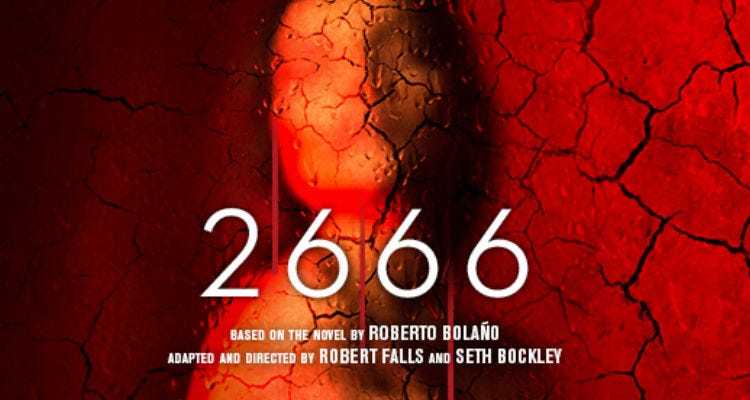news
Robert Bolaño’s Epic 2666 Is Now a Five-Hour Play

by Melissa Ragsdale

In a surprising move, Chilean author Robert Bolaño’s mind-bending masterpiece 2666 has been adapted for the stage and will be premiering in Chicago at the Goodman Theater this February. If that’s not enough to ignite your curiosity, the project is being funded entirely by a fund actor Roy Cockrum created after winning $153 million dollars from Powerball.
At a whopping 898 pages, 2666 is a behemoth of a novel, encasing so many dimensions that just summarizing it is a challenge, let alone adapting it into a full play. Any lover of long, difficult literature will empathize with the play’s director, Robert Falls, who became “weirdly obsessed” with the novel years ago. “The process of staging it is part of trying to figure out what it is I personally respond to,” he told The New York Times. “I still don’t quite know.”
Published posthumously in 2004 and then translated to English in 2008, the novel is a resounding exploration of the 20th century, with a narrative that spans nearly 80 years, dipping in and out of internal stories. Centered around the city Santa Teresa, the plot includes academics searching for a reclusive German author, a New York reporter on his first Mexican assignment, and the unsolved murders of 300 women in Juarez.
The play adaptation is (as one would expect) epically long, spanning five hours total, with five distinct parts and three intermissions. A cast of 15 actors play nearly 80 roles. The production also features video projections and even a full-fledged movie, projected on a screen that lowers over the entire stage. Director and playwright Seth Bockley (who’s partnered on the project with Falls) has compared the play to “binge-watching” Bolaño.
“The challenge we took on wasn’t to be confusing and experimental and wild,” said Bockley, “but to ask, how do we do what Bolaño did, only in the time-based, 3-D, actor-driven medium of theater?”
Falls and Bockley narrowed the content down to its essential characters and plot lines, though they do occasionally foray into the stories within stories that make 2666 such an intense read. Each part was designed with its own distinct style, meant to compare to the literary genres Bolaño drew from: fairy tale, hard-boiled crime novel, academic satire, lyrical short story, and “Don Quixote”-style picaresque.
An ambitious project for sure, fans of Bolaño, literature, and theatre have plenty of reasons to be excited about this new way to experience 2666. For me, the project has awakened a hopeful question: if Falls and Bockley can successfully adapt 2666, what can’t we adapt? Infinite Jest? Gravity’s Rainbow? Anything seems to be possible.









